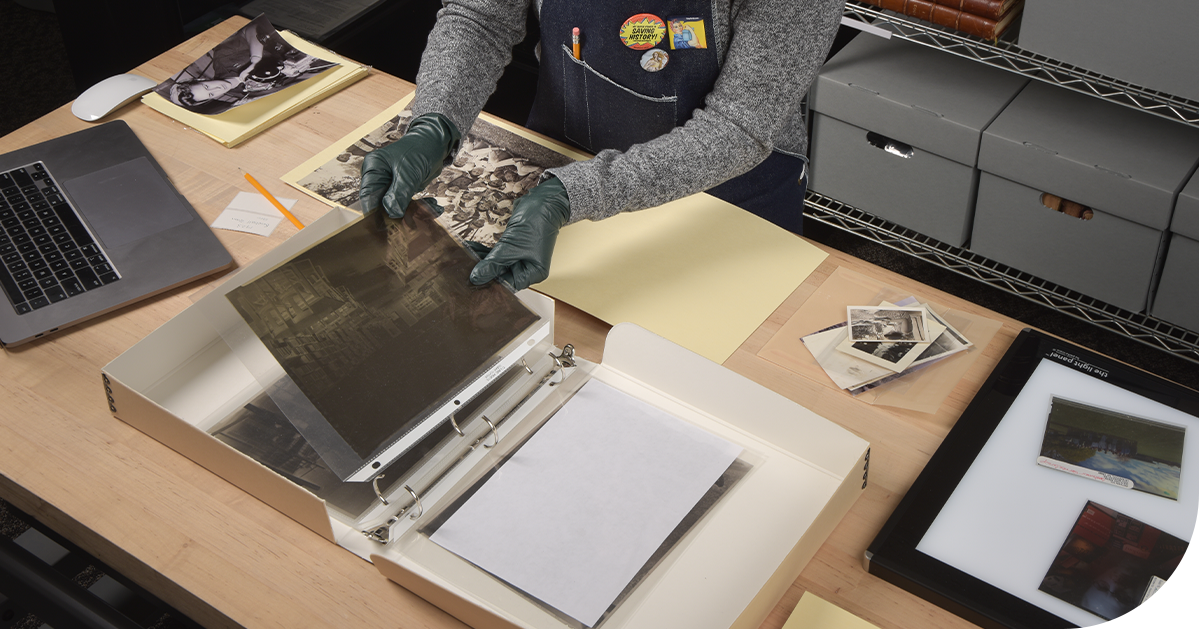Handling artifacts, whether ancient relics, historical documents, or vintage collectibles, requires care and respect to ensure their preservation for future generations. Knowing when to wear gloves is an essential part of this process and is more complex than one might think. Let's dive into the ins and outs of glove usage in artifact handling.
The pros of gloves
We mainly wear gloves when handling objects to protect them from the oils and dirt on our hands, which can cause significant deterioration over time. Many types of objects are susceptible to the oils from our skin.
Another reason we may wear gloves when handling objects is to protect the wearer from contact with hazardous materials. Some items were historically made using hazardous materials like arsenic and should only be handled when wearing gloves. If mold is present on an object - you should wear nitrile gloves.
The Cons of Gloves
The main issue with gloves is that they limit your dexterity. This can be problematic when handling paper items such as books and documents. You're more likely to tear paper when you're wearing gloves.
Types of gloves
Most institutions prefer vinyl, nitrile or latex gloves as they fit close to the skin and don't limit tactile sensitivity to the same level as cotton ones.
Types of Objects
This is not a comprehensive list and doesn't apply to all items. If you are unsure of an item's composition, defer to wearing gloves or contact a conservator for guidance.
You should always wash your hands regularly before handling any object, regardless of whether you are wearing gloves.
Documents
Documents typically will not require gloves because they cause a loss of dexterity, which can lead to unintended tears and other damage.
Photographic materials
Nitrile gloves are recommended when handling photographic materials such as negatives, prints and slides. The oils and acids present on human skin can transfer onto these delicate surfaces, leading to discoloration, staining, and even degradation over time. Additionally, fingerprints can leave behind marks that are difficult, if not impossible, to remove without damaging the image.
Even with gloves, you should only handle photographic materials by the edge, such as photographs and negatives or the paper mount, for slides.
Books
For most book handling, clean hands are sufficient. There are a couple of situations where gloves should be worn when handling books. The first is when the book has metal accents. The second is for books with covers that were created with toxic pigments (see the Poison Book Project for more information).
Film & Other Audiovisual Mediums
Like photographic materials, they are sensitive to the oils our skin produces. Therefore, gloves should be worn when handling them.
Old taxidermy
Before the 1980s, arsenic compounds were used as preservatives for mounted animals. If you suspect a taxidermy object may be pre-1980s, you should wear gloves. You can learn more about arsenic in museum objects in this NPS Conserv-O-Gram: Arsenic Health and Safety Update.
Ivory
Items made from ivory should always be handled while wearing gloves. The Smithsonian recommends white cotton gloves for handling ivory.
Metal
Most metal objects should not be handled with bare hands. Gloves protect the objects from the salts and oils from your skin, which can damage the finish.
clothing
In most cases, clean, dry hands are sufficient when handling textiles. You should remove bracelets or rings to avoid snagging on delicate fabric. However, gloves would be recommended in some situations, as mentioned above. Because toxic chemicals were used to dye and treat textiles during certain periods of history, you should defer to wearing gloves if you are not certain of a textile's composition to protect yourself from unknown contaminants.
Properly handling artifacts is crucial for their preservation and longevity. While wearing gloves can protect precious objects, it is important to consider the type of object being handled and its potential limitations. There will always be exceptions; if you aren't sure of the best handling practices for an object, please consult with a conservator.
For More Information:
- Should gloves be worn when handling valuable collections? - Library of Congress' Ask a Librarian series
- Misperceptions about White Gloves - International Preservation News, No. 37 Dec 2005
- Handling Historical Collections: The Gloves are Still Off - The National Archives UK
- To Glove or Not to Glove: Wearing Gloves for Collections - Gabriel Dunn, Conservator at The Strong National Museum of Play
- No Love for White Gloves, or: the Cotton Menace - Smithsonian Unbound Blog
- Let's Work Hand in Glove - Archives New Zealand
- Why aren't you wearing gloves? The conservators' guide to object handling in the British Museum - The British Museum ▶️
- What is the policy of The National Archives on wearing gloves to handle documents? - The National Archives UK
- Safe Handling of Medieval and Early Modern Manuscripts - Harry Ransom Center at the University of Texas at Austin
- Gloves or No Gloves? On the Proper Handling of Rare Books & Manuscripts - Portland State University
- Curatorial Care of Metal Objects - National Parks Service (NPS)




